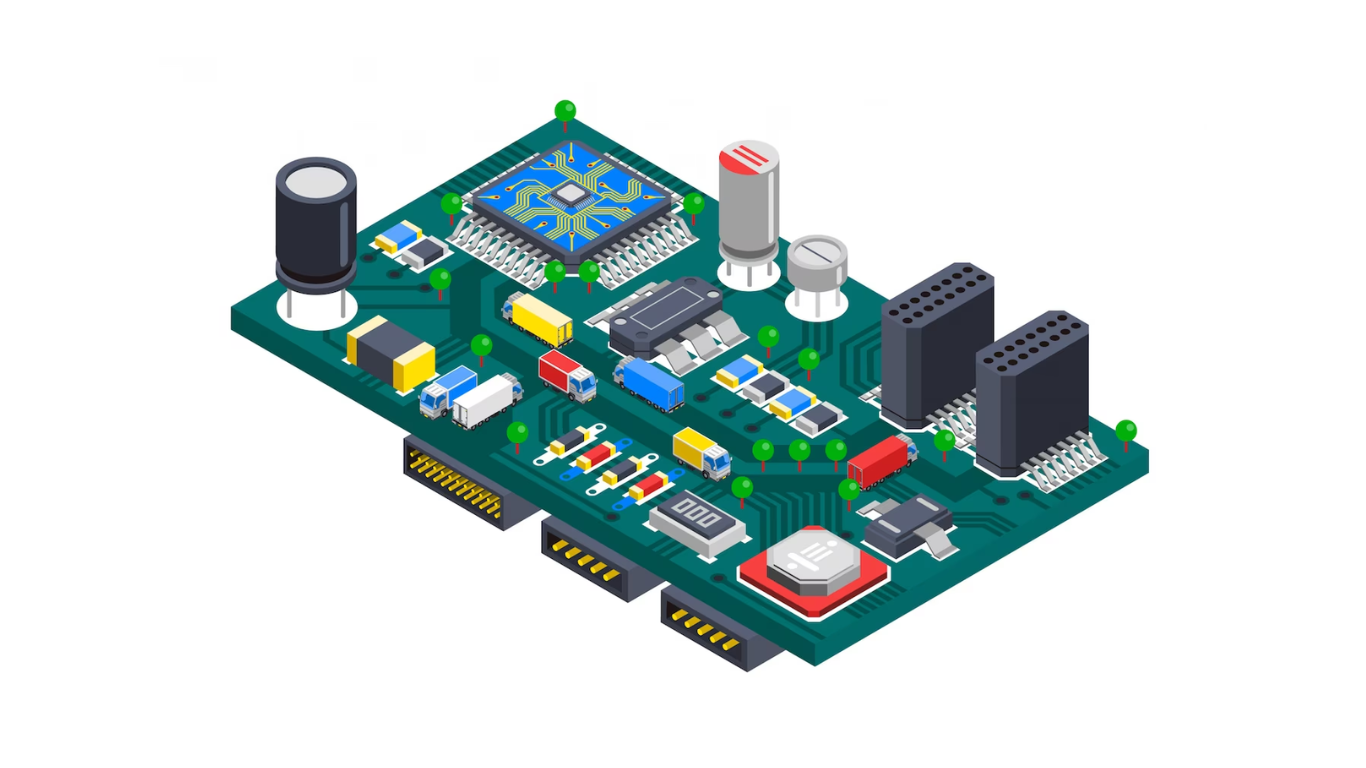
Silicon (Si) serves as the foundational material for the majority of chips. The popularity of silicon stems from its numerous advantageous properties:
- Ideal Band Gap: Silicon boasts an optimal band gap of 1.1 eV1, making it well-suited for various circuit applications. Its high band gap prevents intrinsic conduction until temperatures surpass 200 °C (392 °F). This aligns with the operational temperatures commonly encountered in technical applications. Moreover, silicon’s relatively low band gap facilitates the fabrication of field-effect transistors with very low threshold voltages.
- Stable Insulator: Silicon dioxide (SiO2) functions as a highly stable and intrinsic oxide with commendable insulating properties. It can be conveniently manufactured and finds use as an insulator between interconnects, as well as a dielectric in capacitors and field-effect transistors.
- Effective Heat Conduction: Silicon exhibits efficient heat conduction, a crucial attribute for miniaturization. In compact structures, dissipating power losses swiftly is imperative to avert overheating, which could trigger intrinsic conduction or damage.
- Monocrystal Formation: Silicon is readily grown in substantial monocrystals that can subsequently be sliced into wafers. These monocrystals possess a meticulous arrangement of atoms in all directions without any discontinuities. This property is pivotal for employing silicon as the base material in IC fabrication, as it precludes undesirable current paths that might arise from lattice irregularities like grain boundaries and lattice defects.
Silicon, in its natural state, is found as oxidized and impure material, mainly in the form of ordinary sand. It must undergo a process to remove bonded oxygen and eliminate impurities. Subsequently, it is “grown” into a monocrystal. The growth process involves melting silicon while maintaining the temperature slightly above its melting point of 1414 °C (2577 °F). A small silicon monocrystal is introduced onto the molten mass. Upon contact, silicon atoms from the molten mass adhere to the seed crystal. As these silicon atoms cool slightly, they align with the structure of the seed crystal. By gradually moving the seed crystal away from the molten mass, the monocrystal continues to expand. During this procedure, the silicon can also be doped by incorporating doping agents into the molten mass.
Advantages and Disadvantages of Silicon as a Semiconductor:
Advantages of Silicon as a Semiconductor
- Mass Production and Cost Efficiency: Silicon can be easily produced in large quantities, leading to cost-effective manufacturing processes and affordable end products.
- Versatile Bonding: Silicon possesses the ability to form covalent bonds with various atoms, including hydrogen and nitrogen. This property, attributed to its four valence electrons, enhances its adaptability in creating diverse compounds.
- Optimal Bandgap: With a bandgap of 1.1 eV, silicon has the capacity to conduct electricity under appropriate conditions, enabling its use as a semiconductor material.
- Integrated Circuit Compatibility: Silicon pairs effectively with other semiconductors to construct integrated circuits. This compatibility facilitates the design and fabrication of electronic devices, including computers.
Disadvantages of Silicon as a Semiconductor
- Limited Electrical Performance in Pure Form: In its pure state, silicon neither excels as a conductor nor an insulator. This inherent characteristic complicates its utilization as an effective electrical material, necessitating alloying with other substances to enhance its properties.
- High Melting Point and Manufacturing Complexity: Silicon boasts a high melting point, demanding more energy for melting compared to numerous other semiconductors. This elevated melting point can alter the manufacturing process and elevate costs associated with silicon-based semiconductor production.
- Temperature Sensitivity: Silicon is prone to breaking down at extremely high temperatures. Consequently, its application as a semiconductor is restricted to temperatures within a specific range, curtailing its usage in scenarios demanding extreme thermal conditions.
These advantages and disadvantages collectively shape silicon’s role as a prominent semiconductor material, influencing its widespread usage in various electronic applications while also acknowledging its limitations.